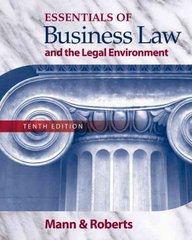Question
Low Income Housing Case Assume there is a well-defined geographic area of a city. The area is composed exclusively of apartments and is populated by
Low Income Housing Case
Assume there is a well-defined geographic area of a city. The area is composed exclusively of apartments and is populated by low-income residents. The people who live in the area tend to stay in that area because (1) they cannot afford to live in other areas of the city, (2) they prefer to live with people of their own ethnic group, or (3) there is discrimination against them in other areas of the city. Rents paid are a very high percent of peoples' incomes.
Based on the statement above, please answer the questions below:
(1) Would the demand for apartments in this area be relatively inelastic or relatively elastic? State why?
(2) Would the supply of apartments in this area be relatively inelastic or relatively elastic? State why?
(3) Now assume the government creates a rent supplement program. Under this program, the renter is required to pay 30% of income in rent. Any additional rent is paid by the government --- up to a limit. For example, a low-income person with an income of $1,000 a month would be required to pay $300 in rent (30%). If the rent is $500, the other $200 would be paid by the government. How would this affect supply and demand?
(4) Instead, now assume that the government decides to provide a building subsidy to people who build apartments in this low-income area. A certain percent of their costs will be paid by the government. How would this affect supply and demand?
PreviousNext
Step by Step Solution
There are 3 Steps involved in it
Step: 1

Get Instant Access to Expert-Tailored Solutions
See step-by-step solutions with expert insights and AI powered tools for academic success
Step: 2

Step: 3

Ace Your Homework with AI
Get the answers you need in no time with our AI-driven, step-by-step assistance
Get Started


